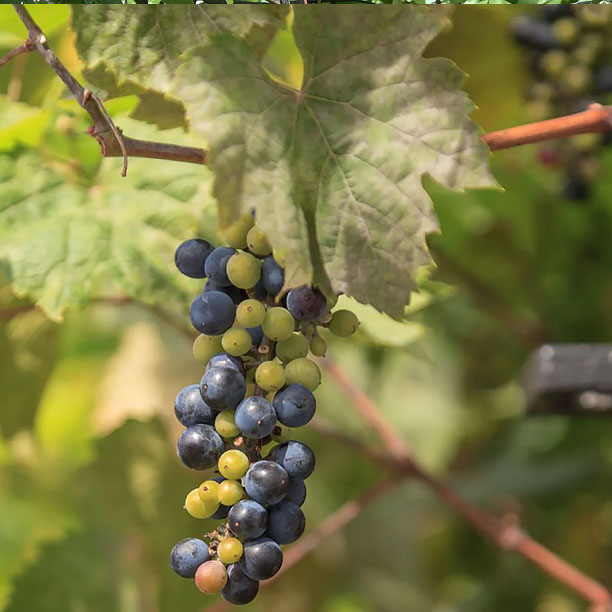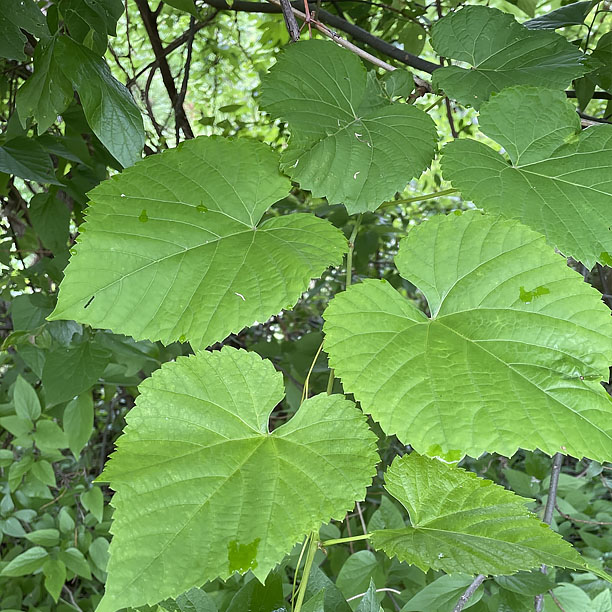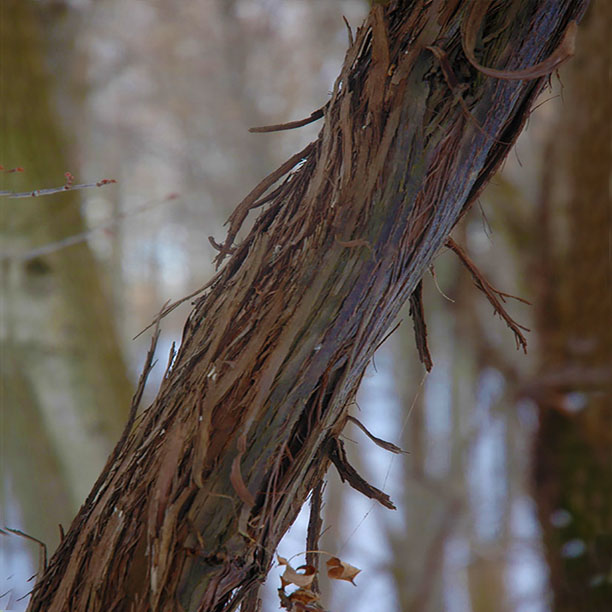Wild Grapes
How To Identify
The most common wild grape in the northeast is the riverbank or frost grape. It has both male and female plants and can grow up to 75 feet long. These vines can be seen growing into brush and trees using its tendrils and can reach the top of the tree canopy. The vine has reddish brown bark that shreds into narrow strips. The leaves are alternating and generally 4-6 inches long and about the same width with a tendril at the opposite note of the leaf. The young leaves are yellowish and turn green as they mature and are heart-shaped with three lobes with toothed margins. In the spring clusters of yellow-greenish flowers on 3–8-inch stems appear. In the late summer to fall, these will be clusters of bluish-black grapes with 1 to 4 seeds each.



Benefits
Wild grapes are a good source of vitamins B1, B6, vitamin C, vitamin K, manganese and potassium. They are considered a great source of antioxidants from phytonutrients and the polyphenol resveratrol, which is present in the skins.
Grape leaf tea has been used to treat diarrhea, hepatitis, thrush, and stomachache. A leaf poultice can be applied externally for sore chest, headache, rheumatism, or fever.
How To Find
The wild grape is commonly found in disturbed areas. You will see it in woodlands, thickets, on riverbanks, in abandoned fields, and even in your backyard. The leaves or vines are the first things noticeable depending where you are. In the woods you may see the vine first as the leaves may be growing up in the trees where it can get to the sun. Along a roadside or riverbank you may see the leaves first as they reach out for the sun. The grapes are normally hidden under the leaves but disappear quickly once ripe to the birds and squirrels.
Gathering
Gathering the leave for eating is suggested to be done in early spring when the leaves are small as they will be less bitter. The leaves however can be harvested through summer and into fall. The grapes become ripe and can be harvested in late summer to early fall if you can beat the wild critters to them.
How To Use
The young leaves can be used in a salad, older leaves are often used as wraps around rice or other grains and vegetables or meats. The grapes can be eaten fresh or can be preserved as juice, jams or jellies. You can also make wine or wine vinegar from the grapes.
Preservation
Grapes can be stored in the refrigerator, leaves are best eaten fresh, however if you are going to dry the leaves for a tea they can be preserved.
To preserve the leaves, place them into a paper bag, or on a screen (window screen or similar) and allow them to dry in a dry dark place with good airflow. They can also be dehydrated using very low or no heat in a standard dehydrator or freeze dried. Oven drying isn’t recommended as the heat can damage the medicinal benefits.
Grapes can be steamed or cooked down and strained to remove the juice for beverages, vinegars or jelly and preserved using appropriate canning methods.